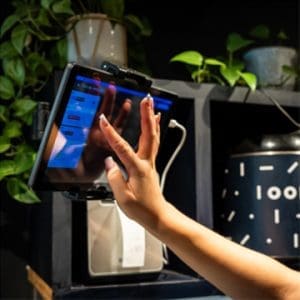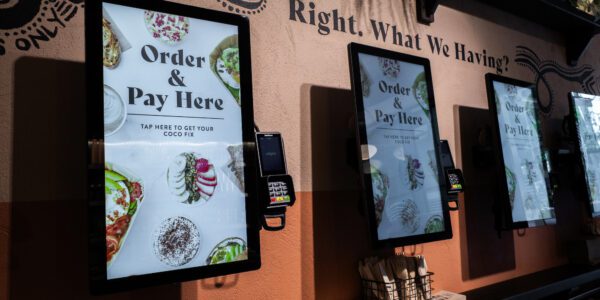Announcing Charlie Horrell as new CEO
Announcing the appointment of veteran cloud-software executive Charlie Horrell as the company’s new Chief Executive Officer.

Learn how managing your delivery orders in one place can reduce labour costs and help get more out of your team…
Third-party restaurant delivery channels like Deliveroo and Just Eat are essential to running a modern hospitality business.
But for each of these channels you add to your operation, it can feel like you’re adding another layer of complexity.
This can be a real problem for your labour model when your team are wasting time managing all these separate channels. And this can have a knock-on effect for the customer service you’re delivering at your sites.
So, how can you make third-party delivery work more efficiently for your operation?
Read on to discover how growing brands have centralised order management to solve the delivery problem, making their labour model more efficient as they do so…
When introduced as isolated channels, third-party delivery partners can disrupt the smooth running of your operation.
Some operations dedicate a full-time staff member to managing incoming orders from third-party delivery channels. This staff member is often tasked with manually inputting orders from delivery channels into the POS so that those orders can exist in the same kitchen system.
Not only is this a waste of time for a staff member, but it’s also a process rife with human error. Manually inputting orders can easily lead to a missed item or incorrect customisation, ultimately resulting in a bad customer experience and higher waste costs.

26/09/24 | 15:00-15:45 BST
Discover how ambitious brands are overcoming limited labour resources and building strong teams.
Learn live from trailblazers including Tommy Giraux from Honest Burgers and David Ellison from Deep Blue Restaurants.
But if you don’t dedicate a team member to inputting delivery orders into the POS, your kitchen will pay the price.
When each of your order channels comes through to separate Kitchen Display Screens and tablets, it’s next to impossible for your team to manage them efficiently. How can they know which orders came in first or which ones to focus on next?
This is known as ‘tablet hell’ and causes a stressed-out, inefficient kitchen team that struggles to deliver orders accurately, quickly, or calmly.

For each delivery channel you add, there’s at least one more menu to manage, on one more separate system.
This can be a real headache for your head office team. When you depend on multiple separate platforms hosting your delivery channels, even updating the price of a single menu item can become a real labour.
This doesn’t just waste valuable time; it’s another part of the process where human error can have a real impact on the customer experience.

The answer to these problems? Centralised order management.
With a single Order Management System, all of your order channels and menus are managed in one central place. That includes your on-site channels like POS and Kiosks, as well as off-site channels like Click & Collect.
Critically, all your third-party delivery channels are also managed in this single system.
When your operation uses one system to manage all orders, they all come through into the same platform. This includes any orders from delivery partners like Deliveroo and Just Eat. They all exist in the same ecosystem automatically.
This eliminates the need for a staff member to manually input orders from delivery partners into the POS and negates the potential for human error and order inaccuracy.
This can save your operation on labour costs, or you can dedicate that member of staff to more valuable hospitality tasks across your operation.


A centralised Kitchen Management System is an essential part of an Order Management System. This KMS handles all orders, meaning your kitchen doesn’t have to work from multiple systems with separate tablets showing separate orders.
Instead, your Kitchen Display Screens automatically shows orders from every channel – or you can filter the channels you want to see on each screen.
This means your kitchen will be working from a single source of truth. They can clearly see orders in the sequence they come in, and they can fulfil orders more calmly, accurately, and quickly. With a more efficient and streamlined kitchen process, you can save on labour costs and still fulfil your orders.
And for your head office team, delivery channels no longer have to add hours of manual menu management to their time.
Instead, menus from every channel – including third-party delivery – are all managed in one place. To change the price of a menu item, for example, you don’t have to make the same change multiple times across platforms. Change it once, and push that change out to all your channels – including delivery partners – with the push of a button.
This means hours less repetitive, manual work, freeing your team up to dedicate to more growth-oriented tasks.

The long-term benefit of delivery integrations
Using one system to combine your delivery and in-house orders is a critical part of hospitality growth strategy and this goes beyond saving on labour costs. The above benefits will all contribute to long-term growth plans.
Talk to one of our experts about your operation’s labour challenges, and discover how you can save on costs and get the most out of your team with a single system.
Announcing the appointment of veteran cloud-software executive Charlie Horrell as the company’s new Chief Executive Officer.

Self serve kiosks aren’t just for McDonalds any more. Discover the financial and operational benefits of kiosks and why they might be right for your restaurant.

Learn the benefits of centralising your hospitality data, and how easy-to-read, real-time reports will help you scale your business.
